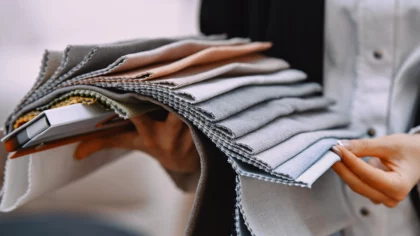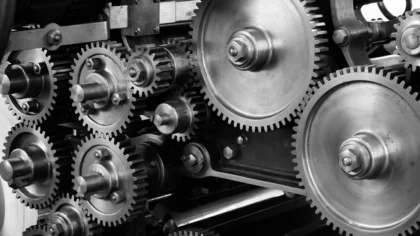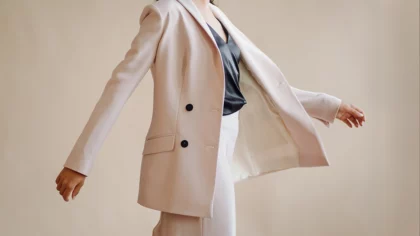Accelerate Productivity in 2025
Reignite Growth Despite the Global Slowdown
Advancements in textile technology like AI-powered predictive analytics, nanotechnology, digital textile printing, and blockchain-driven supply chain transparency are paramount for the industry. These innovations enable the creation of ultra-customized fabrics, real-time inventory management for textile mills, and intelligent tracking systems that verify the ethical sourcing of fibers. For example, AI-optimized weaving machines combined with nanotech fabrics create self-cleaning textiles to reduce frequent washing and enhance sustainability in high-performance apparel. This report explores 10 emerging technologies impacting the textile industry and provides industry leaders with insights to navigate these technological shifts and drive business decisions.
Why should you read this report?
- Gain insights into the top 10 technologies impacting textiles.
- Learn about three practical use cases for each technology.
- Meet 10 innovative startups advancing these technologies.

Key Takeaways
- Additive Manufacturing
- Use Cases:
- Customized Fashion Accessories
- Prototyping of Textile Machinery
- Innovative Fabric Design
- Startup to Watch: The New Norm
- Use Cases:
- Artificial Intelligence
- Use Cases:
- Demand Forecasting
- Quality Inspection
- Supply Chain Management
- Startup to Watch: Pleneri
- Use Cases:
- Augmented Reality (AR) & Virtual Reality (VR)
- Use Cases:
- Virtual Showrooms
- Design Visualization
- Industrial Training
- Startup to Watch: R Reflections
- Use Cases:
- Big Data & Analytics
- Use Cases:
- Consumer Trend Analysis
- Supply Chain Optimization
- Quality Control
- Startup to Watch: Sortile
- Use Cases:
- Blockchain
- Use Cases:
- Supply Chain Transparency
- Ethical Sourcing Verification
- Product Authenticity
- Startup to Watch: PaperTale
- Use Cases:
- CleanTech
- Use Cases:
- Sustainable Materials
- Water Recycling
- Energy-efficient Integrations
- Startup to Watch: OurCarbon
- Use Cases:
- Connectivity Technologies
- Use Cases:
- Supply Chain Management
- Real-time Inventory Tracking
- Customer Engagement
- Startup to Watch: Applied Sensor
- Use Cases:
- Internet of Things (IoT)
- Use Cases:
- Manufacturing Automation
- Predictive Maintenance
- Quality Control
- Startup to Watch: Pentalink
- Use Cases:
- Advanced Robotics
- Use Cases:
- Automated Sewing
- Quality Inspection
- Material Handling
- Startup to Watch: CETIA
- Use Cases:
- Nanotechnology
- Use Cases:
- Nano-Fabrics
- Smart Textiles
- Wearable Technology
- Startup to Watch: MATERIX Nano Technology
- Use Cases:
Textile Industry FAQs
What is the future of textile technology?
AI and data analytics streamline manufacturing to optimize processes and reduce material use. Smart textiles integrate sensors into fabrics for health monitoring and environmental adaptability. Moreover, sustainability drives the industry forward, with circular economy models emphasizing recyclability and ethical sourcing.
What are the trends in textile innovation?
Textile technology trends shift the industry towards digital growth and advanced manufacturing processes that enhance both functionality and consumer experience.
- AI-driven automation enhances production and enables faster and more efficient operations by optimizing workflows and reducing human error.
- Robotics automates tasks like sewing and material handling to increase precision and speed.
- AR and VR offer immersive design experiences and virtual try-ons to reduce the need for physical samples and streamline the design process.
- Customization technologies enable customers to create garments, from design to fit, using digital platforms.
These trends collectively enhance textile manufacturing techniques for efficiency, creativity, and customer engagement.
Where is this Data from?
StartUs Insights provides data through its comprehensive Discovery Platform, which covers 4.7 million startups, scaleups, and tech companies globally, as well as 20,000 emerging technology trends. The platform excels in startup and technology scouting, trend intelligence, and patent searches, offering a detailed view of the innovation landscape. For this report, we analyzed technologies within specific industries using the trend intelligence feature. During this research, we identified patterns and trends, pinpointing relevant use cases and the startups developing solutions for each. More capabilities and details are available at StartUs Insights Discovery Platform.
10 Emerging Textile Technologies Impacting the Future of the Industry [2025 & Beyond]
1. Additive Manufacturing

In the textile industry, additive manufacturing incorporates advancements like multi-material printing, conductive filament integration, and 4D printing. Multi-material 3D printing creates fabrics with varied textures, stretchability, and strength within a single print. This allows for more complex and functional textile designs. Similarly, conductive filaments enable smart textiles by embedding sensors or circuits into the fabric. Further, 4D printing enables textiles to change shape or adapt their properties based on external stimuli, like heat or moisture, to provide responsive clothing and high-performance fabrics. These technologies enhance both functionality and design with smarter, adaptive, and sustainable fabrics.
3 Practical Use Cases of Additive Manufacturing in Textile
- Customized Fashion Accessories: Using flexible and durable textile-grade materials, these accessories feature intricate patterns, textures, and customized fits for catering to individual preferences. With digital customization platforms, the industry offers made-to-order textile products that reduce waste and align with consumer demand for sustainability and personalization.
- Prototyping of Textile Machinery: 3D printing prototypes key components for weaving, knitting, or digital printing machines. By using advanced materials like carbon fiber composites and high-strength polymers, manufacturers test new machine parts, such as loom enhancements or textile cutters for faster refinement cycles.
- Innovative Fabric Design: By leveraging techniques like 3D-printed nanostructures or multi-material printing, designers produce fabrics with enhanced functionality, such as moisture-wicking or thermal regulation. These innovations combine aesthetic appeal and meet the increased demand for performance textiles.
Startup to Watch: The New Norm
US-based startup The New Norm converts non-recyclable plastics into sustainable fabrics using proprietary recycling technology. Its 3D knit garments leverage an on-demand production model to ensure zero wasted inventory. The company also utilizes recycled materials, such as party cups, to create naturally dyed yarns without using water. By replacing staple yarns, the company’s filament yarns reduce microplastic pollution.
2. Artificial Intelligence

Machine learning algorithms, neural networks, and computer vision improve textile design and production. For example, generative adversarial networks (GANs) create complex textile patterns by analyzing trends and consumer preferences while machine vision systems ensure precision in quality control and detect defects in fabric manufacturing. Additionally, AI’s role in supply chain optimization – through predictive analytics and real-time data processing – allows manufacturers to manage resources, minimize waste, and improve overall production timelines.
3 Practical Use Cases of AI in Textile
- Demand Forecasting: AI enhances demand forecasting by analyzing historical sales data, market trends, and external factors to predict future demand with high accuracy. This allows textile companies to optimize inventory levels, reduce waste, and meet customer needs while improving profitability and market responsiveness.
- Quality Inspection: Utilizing computer vision and machine learning algorithms to detect defects and inconsistencies in fabrics and garments. This AI-based automated process speeds up quality control and ensures higher product quality while reducing returns and enhancing customer satisfaction.
- Supply Chain Management: Real-time insights and predictive analytics manage risks, optimize logistics, and ensure timely delivery of materials and products. It improves efficiency across the supply chain to reduce operational costs, enhance collaboration with suppliers, and increase supply chain resilience.
Startup to Watch: Pleneri
Pleneri is a US-based startup that develops FitOS, a web-based application that controls and optimizes production. With built-in AI, FitOS generates style features, specifications, and the bill of materials to refine and align the output according to the designs. Further, FitOS’ AI develops a digital tech pack that integrates with smart factories to streamline production. This system optimizes cutting, assembling, and scheduling processes to reduce resource downtime and accelerate time to market.
3. Augmented Reality & Virtual Reality

Leveraging AR and VR in the textile industry enhances design, prototyping, and customer experiences. AR utilizes 3D modeling, real-time rendering, and camera sensors to overlay virtual elements onto physical environments and provide interactive visualizations of fabrics and designs. On the other hand, VR uses motion tracking and haptic feedback systems to design garments in virtual spaces. Additionally, textile electronics, when integrated with AR and VR, create interactive and adaptive fabrics that enhance design efficiency and customer experience.
3 Practical Use Cases of AR & VR in Textile
- Virtual Showrooms: AR & VR in virtual showrooms create immersive shopping experiences where customers explore and interact with products in a lifelike digital environment. This reduces physical store space and travel, broadens customer reach, and offers a personalized shopping experience for improved customer engagement.
- Design Visualization: Designers create and manipulate 3D models of garments and fabrics to visualize and adjust designs in real time before committing to physical production. It improves the design process, reduces material waste, and aligns the final product with the designer’s vision.
- Industrial Training: Realistic simulations of machinery and processes enable workers to learn and practice skills in a safe and controlled environment. It improves knowledge retention, reduces the risk of accidents, and decreases the time needed to bring new employees up to speed. This enhances operational efficiency and safety across the textile industry.
Startup to Watch: R Reflections
UK-based startup R Reflections offers a virtual clothes fitting room app to try on outfits before purchasing. It enables online shoppers to upload their images and virtually model clothing. The app also allows customers to save favorite outfits, upload personal clothing, and experiment with pre-downloaded styles. Moreover, the app integrates into retailers’ websites to reduce return rates and enhance the shopping experience while mitigating in-house product development.
4. Big Data & Analytics

Technologies such as ML, predictive analytics, and cloud computing analyze vast amounts of structured and unstructured data for real-time quality monitoring, identifying inefficiencies, and accurate demand forecasting. Data storage solutions like NoSQL databases and distributed architectures manage the large-scale data generated across textile operations. Additionally, big data and analytics tools, integrated with IoT devices, streamline production and supply chain processes to reduce costs and improve sustainability.
3 Practical Use Cases of Big Data & Analytics in Textile
- Consumer Trend Analysis: Big data and analytics process large volumes of customer data to identify shifts in preferences and predict future trends. Such insights allow textile brands to tailor their product offerings for increased sales and stronger customer loyalty.
- Supply Chain Optimization: Real-time visibility into the supply chain enables companies to streamline inventory and logistics. This reduces costs, minimizes delays, and improves the overall efficiency of production and distribution. Also, it ensures that the products reach the market more quickly and at a lower cost.
- Quality Control: Continuously production monitoring solutions analyze data from various checkpoints to detect potential defects or inconsistencies. This proactive approach ensures higher quality products, reduces waste, and decreases costly recalls.
Startup to Watch: Sortile
US-based startup Sortile identifies, sorts, and tracks textile data to enhance circularity. The company’s device utilizes near-infrared (NIR) technology and AI to determine the fiber composition of textiles. It identifies materials such as cotton, polyester, poly-cotton blends, and more to meet the chemical and mechanical recyclers’ requirements. The device’s software aggregates and analyzes material data to offer insights into fiber composition, color, traceability, and environmental impact. Also, it supports third-party integration by consolidating data from different hardware sources and providing a view of operations. It includes features like impact reporting and data sharing and maximizes the recovery of valuable materials.
5. Blockchain

Blockchain enhances transparency, accountability, and traceability in textile supply chains. Its decentralized and distributed ledgers enable secure, immutable record-keeping to protect all transactions, from raw material sourcing to finished goods. Advanced features like cryptographic seals and digital twins further track physical goods to reduce the risk of counterfeiting and ensure product authenticity. Additionally, smart contracts enable automated data collection and execution of agreements to improve inventory management and logistics. These technologies collectively enhance trust and sustainability, responding to growing consumer demand for ethically produced textiles.
3 Practical Use Cases of Blockchain in Textile
- Supply Chain Transparency: Blockchain records every transaction and movement of goods on an immutable ledger to trace the origin and journey of materials in real time. It reduces the risk of fraud and offers a more efficient and reliable supply chain.
- Ethical Sourcing Verification: Documentation and verification of materials provide a secure, tamper-proof record of each step in the supply chain. This assures consumers that products meet ethical standards while enhancing brand reputation, building customer loyalty, and aligning growing consumer demand for ethically produced goods.
- Product Authenticity: Blockchain secures product information, from raw materials to the finished garment, creating a digital certificate of authenticity. This verification process protects brands from counterfeit goods, ensures product quality, and increases consumer confidence, thereby safeguarding brand integrity and driving sales.
Startup to Watch: PaperTale
Swedish startup PaperTale captures real-time data across the supply chain on a public blockchain. It incentivizes all supply chain members to maintain transparency, provides consumers with verified information, and ensures brands and factories comply with regulations. The company’s PaperTale Network verifies environmental and social impact data, such as water usage, carbon emissions, and worker compensation. The Supply Chain App then provides access to this data for craftsmen to verify payments and track material ownership. Further, the Consumer App enables consumers to view the complete history and impact of products.
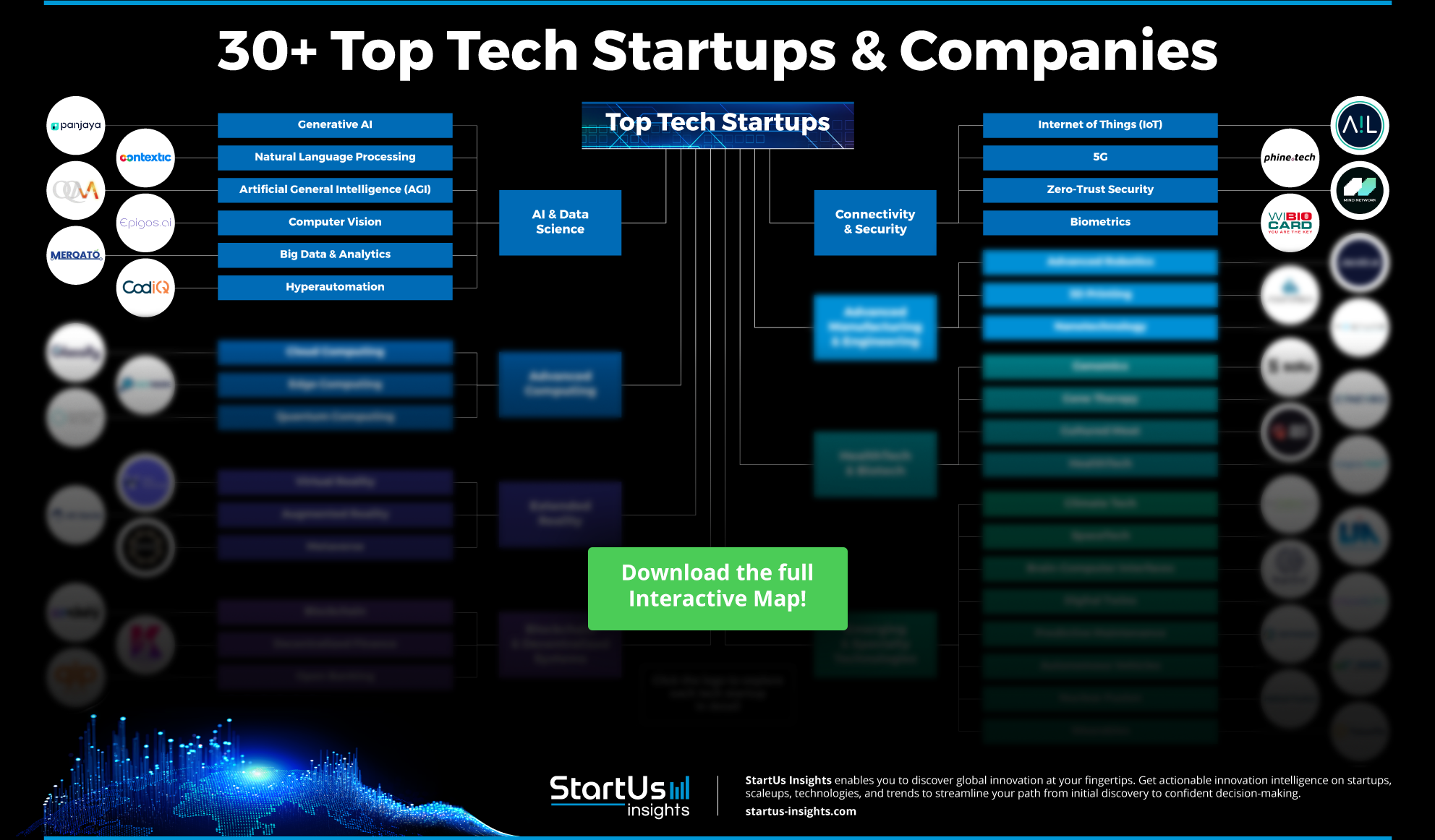
6. CleanTech

Traditional textile manufacturing is resource-intensive and generates considerable greenhouse gas emissions. Cleantech addresses these issues by promoting energy efficiency, water conservation, and waste reduction. For example, carbon capture and utilization (CCU) technologies convert CO2 emissions into usable materials like synthetic fibers. Additionally, waterless dyeing techniques and energy-efficient machinery conserve water and energy in textile production. As the textile industry grows toward circular economy models, cleantech includes sustainable practices through material recycling, waste management, and the use of bio-based alternatives like bamboo and hemp.
3 Practical Use Cases of CleanTech in Textile
- Sustainable Materials: The integration of eco-friendly fibers and fabrics minimizes environmental impact throughout their lifecycle. Sustainable materials reduce the industry’s reliance on non-renewable resources, lower carbon footprints, and meet the growing consumer demand for environmentally responsible products.
- Water Recycling: Filtration and purification systems reuse water in the dyeing and finishing processes. It reduces water consumption, wastewater discharge, and the environmental impact of textile production. Also, it aligns with the stricter environmental regulations and sustainability goals.
- Energy-Efficient Integrations: Reduce the overall energy consumption of textile production by reducing power consumption. For example, advanced machinery with smart sensors optimizes energy use in processes like spinning, weaving, and dyeing. Additionally, waste heat recovery systems and renewable energy sources, such as solar power, further reduce the energy footprint.
Startup to Watch: OurCarbon
Based out of the US, OurCarbon is a startup that converts organic waste streams into a carbon-negative material for fabric production. Through its proprietary process, the company heats organic materials without oxygen. This sequesters carbon and reduces the environmental impact of fabric manufacturing. This way, OurCarbon offers an eco-friendly alternative and lowers the carbon footprint of the industry.
7. Connectivity Technologies

Technologies such as 5G and wireless protocols like Wi-Fi and Bluetooth facilitate the transfer of large data sets between connected devices in textile manufacturing and smart fabrics. Additionally, radio frequency identification (RFID) and near-field communication (NFC) technologies track products throughout the production and supply chain to ensure greater transparency and traceability. By integrating these connectivity technologies, textile companies are able to enhance supply chain transparency, optimize resource use, and drive sustainable practices.
3 Practical Use Cases of Connectivity Technologies in Textile
- Supply Chain Management: Communication and data exchange between suppliers, manufacturers, and retailers ensure efficient coordination and reduce delays. This connectivity improves supply chain transparency, optimizes inventory levels, and reduces costs for a responsive supply chain.
- Real-Time Inventory Tracking: Visibility into stock levels across multiple locations provides inventory management and faster response to demand changes. The real-time tracking reduces the risk of stockouts or overstocking and ensures timely restocking to enhance overall operational efficiency.
- Smart Textile: Smart textiles include embedding sensors and microchips into fabrics for real-time data exchange. These textiles track vital signs, environmental factors, or user movements for applications in the healthcare, sports, and safety sectors. They enhance the user experience by offering personalized health monitoring or performance feedback. Additionally, connectivity enables better inventory management and predictive maintenance for smart textile manufacturers to improve production efficiency while reducing waste.
Startup to Watch: Applied Sensor
Applied Sensor is a US-based startup that creates TrampleTek Blue, a pressure sensor floor mat with Bluetooth and WiFi. The water-resistant mat detects foot traffic, pets, or vehicles in indoor and outdoor settings. Further, it collects metrics such as time spent, pressure exerted, gait, and direction. It tracks customer journeys, monitors security, and maximizes trade show performances.
8. Internet of Things

IoT connects machines, sensors, and devices across the production chain. In textile manufacturing, advanced IoT platforms enable real-time monitoring and data collection to optimize processes like predictive maintenance, quality control, and resource management. Technologies such as radio frequency identification (RFID) tagging, smart sensors, and edge computing enhance efficiency and reduce downtime in textile plants. Meanwhile, IoT-driven innovations in smart clothing integrate connectivity and data analysis directly into garments to explore functional and interactive textiles.
3 Practical Use Cases of the IoT in Textile
- Manufacturing Automation: Connecting machinery and systems enables coordination and real-time adjustments to production processes. It reduces downtime to increase efficiency and allows for more flexible and responsive manufacturing operations by lowering costs and increasing productivity.
- Predictive Maintenance: IoT deploys sensors on equipment to monitor performance continuously. It analyzes data to predict and prevent potential failures before they occur. This minimizes unplanned downtime, extends the life of machinery, and reduces maintenance costs.
- Quality Control: Real-time monitoring of production lines, capturing data on fabric consistency, color accuracy, and other critical quality metrics to provide instant feedback. It enables immediate corrections, reduces defects, and ensures the products meet the standards for customer satisfaction and reduced waste.
Startup to Watch: Pentalink
Japanese startup Pentalink develops an automated silkworm-rearing system using advanced robotics, information and communications technology (ICT), and IoT technologies. The system manages the sericulture process, from silkworm eggs through molting to cocoon production, in a sterile environment without human intervention. Pentalink also produces sterile dried mulberry powder, using ultra-vacuum low-temperature microwave drying, as a low-cost feed for silkworms. This automated system enhances silk production efficiency and reduces reliance on chemical fibers.
9. Advanced Robotics

Robotic arms with laser-guided cutting tools and machine vision systems allow for highly accurate fabric cutting and quality control. AI-driven algorithms further enhance these systems to optimize tasks like sorting, inspecting, and assembling fabrics while maintaining consistency in large production runs. In addition, collaborative robots, or cobots, work alongside human operators to assist in tasks like sewing and fabric handling.
3 Practical Use Cases of Advanced Robotics in Textile
- Automated Sewing: Robotics enable high-speed stitching operations without manual labor. Automated sewing increases production efficiency and ensures consistent quality across large volumes to reduce labor costs and minimize errors.
- Quality Inspection: Robots with vision systems detect defects in fabrics and finished garments. This improves product quality and reduces waste.
- Material Handling: The automation in the movement and organization of textiles within manufacturing facilities streamlines operations, reduces the risk of damage to materials, and increases overall production throughput.
Startup to Watch: CETIA
French startup CETIA provides a textile recyclability platform that transforms textile and leather waste into valuable, recyclable materials using automation, robotics, and AI. The company’s technology identifies and dismantles products, and separates materials by composition and color to optimize recycling processes. This increases waste recovery in the textile industry and supports recyclers, collectors-sorters, and marketers.
10. Nanotechnology

Nanotechnology manipulates materials at the molecular and atomic levels to enhance the physical and chemical properties of fabric. Nanofibers, developed through methods like electrospinning, improve tensile strength, breathability, and moisture management. Additionally, metal oxides and carbon-based nanomaterials add functional properties like antimicrobial activity, UV protection, and increased resistance to water and stains. These innovations enable textiles to maintain durability and performance even after prolonged use and repeated washing.
3 Practical Use Cases of Nanotechnology in Textile
- Nano-Fabrics: The integration of nanoparticles into fibers enhances properties such as durability, water resistance, and stain repellence. This makes the fabric durable, easy to maintain and offers advanced functional benefits.
- Smart Textiles: Nanotechnology embeds sensors and conductive materials within fabrics to respond to environmental changes such as temperature, light, and moisture. It also improves comfort and functionality for the wearer.
- Self-Cleaning Textile: Nanotechnology integrates microscopic particles into textile fibers to enable fabrics to repel dirt and liquids. These particles alter the surface properties and create textiles that shed contaminants and reduce frequent washing. This lowers water and energy consumption during laundering, offers a sustainable solution for both manufacturers and consumers, increases fabric longevity, and reduces maintenance costs.
Startup to Watch: MATERIX Nano Technology
MATERIX Nano Technology is a Turkish startup that offers a multifunctional nano textile coating that enhances the hygiene and longevity of textile-based seating elements such as armchairs and chairs. With this coating, the company applies an antibacterial, hydrophobic, and photocatalytic nanofilm in high-traffic areas like hotels, restaurants, and cinemas. It prevents bacteria and fungi growth on fabrics, repels liquids to avoid absorption, and removes organic dirt.
Outlook for the Textile Industry
Industry Growth
The industry comprises 19300 companies which reflect diversity and growth. It also experienced a 5.54% growth rate in the past year. The sector employs over 584K workers, with 20K+ new employees joining last year.
Patents & Grants
More than 1830 patents and over 100 grants demonstrate the industry’s research and support of innovation.
For more actionable insights, download our free Textile Innovation Report.
Investment Landscape
The average funding is USD 10.9 million. The sector closed more than 190 funding rounds and attracted over 110 investors. In addition, over 80 companies received investments. The top 5 funding rounds include Seed, Early Stage VC/Series A, Pre Seed, Debt Financing, and Later Stage VC/Series C. Further, the top 5 investors in the textiles industry include Lanzadera, SOSV, Techstars, Antler, and Brightlands Incubators.
Global Footprint
The top five country hubs include India, the USA, the UK, Italy, and Pakistan. The leading city hubs include Mumbai, Istanbul, Ahmedabad, New York City, and Lahore.
Leverage Emerging Technology in Textiles
Ready to leverage the latest food and beverage technologies shaping the future? With StartUs Insights, you gain quick and easy access to over 4.7 million startups, scaleups, and tech companies, along with 20,000 emerging technologies and trends. Our AI-powered search and real-time database provide exclusive solutions that set you apart from the competition.
Major companies like Samsung, Nestlé, and Magna rely on our tools to spearhead trends and optimize operations. Like them, you can also dive into unmatched data and benefit from a 360-degree industry view for actionable insights. Get in touch with us now to discover how our innovation intelligence can elevate your strategic initiatives.

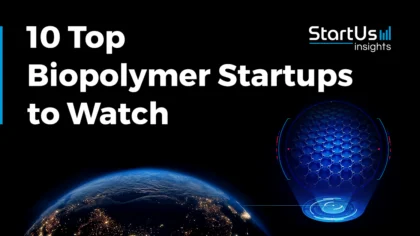
![10 Top Startups Advancing Machine Learning for Materials Science [2025]](https://www.startus-insights.com/wp-content/uploads/2025/06/Machine-Learning-for-Materials-Science-SharedImg-StartUs-Insights-noresize-420x236.webp)
![10 Emerging AI Solutions for Material Science [2025]](https://www.startus-insights.com/wp-content/uploads/2025/06/AI-Solutions-for-Material-Science-SharedImg-StartUs-Insights-noresize-420x236.webp)
